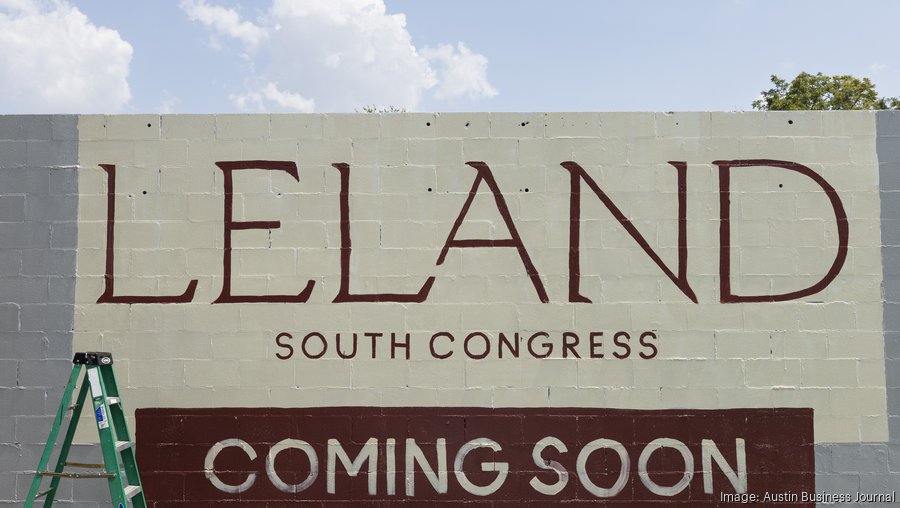
Austin Business Journal writes, "It will take time and it won't help everywhere, but a new zoning designation should boost the supply of housing in Austin.
That's the view of a number of developers when it comes to the so-called Density Bonus 90, or DB90, zoning program approved by the City Council in February. Residential buildings on properties with the new zoning can be up to 90 feet high — 30 feet higher than otherwise allowed — and have ground floor commercial uses, provided certain percentages of the residential units are priced at levels deemed affordable.
“It's unlocking additional properties that couldn't previously achieve the necessary density,” said Chris Affinito a managing partner at Notional Development Partners, a firm that focuses on developing Class A workforce housing in urban cores. “And two, it's taking some of those properties and incentivizing development of mixed-use over just pure commercial use.”
Under DB90, 12% of units must be affordable for households earning 80% or less of median family income if the units are owned, or a fee must be paid instead. For rental properties, 12% of units must be affordable for households earning 60% MFI, or 10% must be affordable for households earning 50% MFI. The DB90 designation replaced a previous city effort to encourage vertical mixed-use density, called VMU2, that was struck down in court.
Where in Austin is DB90 useful?
William Sayers, vice president of real estate development for Intracorp, said DB90 is likely to encourage development predominately in submarkets close to downtown that can command higher prices.
“Those (submarkets) are going to be able to support the higher construction costs and higher affordability burden that DB90 will require,” Sayers said.
Intracorp is developing Leland South Congress under DB90 zoning, a 270-unit condominium project at 2105 S. Congress Ave. that is expected to have 23,000 square feet of retail space. Sayers said the location of the project makes it ideal for DB90 since the South Congress retail corridor is desirable and doesn't have many residential units yet.
So far at least, areas near downtown are garnering the most DB90 rezoning requests, according to data from the Austin Planning Department. The two City Council districts with the most applications are District 3, which encompasses parts of East Austin and the Riverside Drive area and has 15 applications, and District 9, which encompasses downtown, South Congress and the University of Texas campus and has 12.
The only district with no DB90 applications is District 6, which covers the northwest part of the city. All others have from one to seven applications.
How quickly can DB90 add housing?
DB90 has been popular in the program's initial months, with handfuls of DB90 applications routinely on the agendas of the biweekly City Council meetings. As of Oct. 17, 56 applications have been submitted — 29 of which have already been approved, totaling 125 acres.
Still, a rezoning to DB90 doesn't mean affordable housing units will become available immediately. For instance, OakPoint — a 12-acre tract at 8200 N. MoPac Expressway — recently was approved for DB90 zoning, but developers have said they have no immediate plans to build on the site and are waiting for what they view as the right market conditions.
In addition, the rezoning process itself takes time. That's among the reasons that Greg Anderson, a member of the Austin Planning Commission and director of community affairs for Austin Habitat for Humanity, doesn't view DB90 as a quick fix for Austin's housing and affordability woes.
“It takes six months to a year and however much investment from every applicant" to get the rezoning, Anderson said. "It slows down the delivery of housing."
More zoning tools needed
Meanwhile, DB90 doesn’t have universal support in Austin.
City Council member Mackenzie Kelly, who represents District 6, is among those who are skeptical of it, saying at an Oct. 10 City Council meeting that she plans to recuse herself from future DB90 votes. She called the program "too blunt of an instrument to strike an appropriate balance” and said it doesn’t address community concerns about building heights in less-dense areas of Austin.
“In some areas, 90 feet (high) is just too much,” Kelly told the Austin Business Journal.
She advocates that the city keep the DB90 program but also create other density bonus programs with lower height restrictions. She said she plans to present more options on compatibility standards related to density bonus programs sometime in November.
“Only having one tool, I think really limits our ability to ensure that we're growing smartly across the city,” Kelly said.
Anderson said he'd also like to see more alternatives.
“At the end of the day, our 1984 land development code does not have enough zoning options in the toolbox, and so we're always going to be kind of batting our head against an outdated land development code — trying to get square pegs in round holes,” he said.
Regardless, Affinito said not every property rezoned to DB90 will end up having 90-foot tall buildings.
“If you have enough room to get the size that you need with 60 feet, it's a lot cheaper to go up like a five-story wooden building, as opposed to doing an eight-story concrete building,” he said. "
Source: Austin Business Journal
Written by: Sean Hemmersmeier
Published: Ocotber 21, 2024
Posted by Grossman & Jones Group on
Leave A Comment